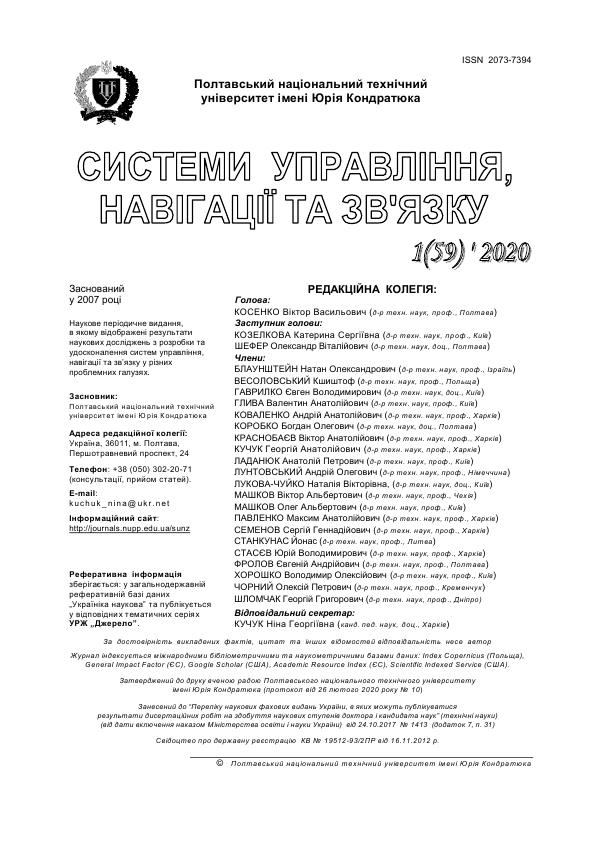ANALYSIS AND EXPERIMENTAL RESEARCH OF CASE – TOOLS FOR VARIABILITY MODELING IN SOFTWARE PRODUCT LINES DEVELOPMENT
DOI:
https://doi.org/10.26906/SUNZ.2020.1.105Keywords:
software product line, variability, architecture, component, CASE - tool, metricAbstract
The subject of study in the article are CASE tools and metrics for modeling and research the variability characteristics of architectures and particular components in software product lines (SPL). The goal is to provide an analytical review of functionality and determination of selection criteria of the appropriate CASE - tools for modeling SPL architectures taking into account specific indicators of their quality, which are calculated on the basis of assessing their level of variability using quantitative metrics, which should provide the opportunity to draw conclusions about the effectiveness of the construction and further use of LPP . The tasks are: to analyze modern information sources on the research topic, to conduct a comparative analysis of several CASE - tools and to choose those to provide effective modeling of the variability characteristics in various types of SPLs, to propose metrics for their quantitative determination and conduct relevant experimental studies. The methods used are: structural analysis of the design features of SPL; quantitative metrics for determining the level of variability of the architecture and particular components in SPL. The following results were obtained: the functional capabilities of modern CASE - tools for modeling the variability characteristics in SPL were analyzed, metrics for quantitatively determining the level of variability were selected, and the possibility of their usage to analyze the effectiveness of the development processes and further utilize of SPL was experimentally investigated. The conclusions are: the experimental studies were conducted for testing SPL models, and they showed that under the conditions of expanding the functionality of the existing CASE-tool, it is possible to formulate practical recommendations for improving the construction efficiency and further use of the corresponding SPL by using quantitative metrics to determine their variability level. The direction of further research is the development of software solutions to improve the functionality of existing CASE – tools, and performance with their usage more experimental studies on effectiveness of the proposed approachDownloads
References
Лавріщева К. М. Нові теоретичні засади технології виробництва сімейств програмних систем у контексті генерувального програмування: монографія. К.: Ін-т програм. систем. НАН України, 2011. 277 c.
Эванс Э. Предметно-ориентированное проектирование (Domain-Driven Development - DDD): Структуризация сложных программных систем. 2011. 448 с.
Reinhartz-Berger I. Domain Engineering: Product Lines, Languages, and Conceptual Models. Heidelberg, Springer, 2013.
Мартінкус І. О., Ткачук М. В., Гамзаєв Р. О. Конструювання лінійок програмних продуктів із застосуванням доменного моделювання та метрик повторного використання коду. Системи управління, навігації та зв’язку: зб. наук. пр. Полтава : ПНТУ, 2017. – Вип. 3 (43). – С. 93-97.
Tkachuk, M., Martinkus, I., Gamzayev, R. An Integrated Approach to Evaluation of Domain Modeling Methods and Tools for Improvement of Code Reusability in Software Development. Heinrich C. Mayr, Martin Pinzger (Eds.): INFORMATIK 2016, Lecture Notes in Informatics. Vol. P-259: Kollen Druck+Verlag GmbH, Bonn, 2016. Р. 143-156.
Tkachuk Mykola, Gamzaev Rustam, Martinkus Iryna. Towards Effectiveness Assessment of Domain Modelling Methods and Tools in Software Product Lines Development. Enterprise Modelling and Information Systems Architectures – International Journal of Conceptual Modeling. Vol. 13 (2018), Germany. Р. 190-206.
Koznov D., Novitsky I., Smirnov M. Variability Management Tools: Readiness for Industrial Use. SPIIRAS Proceedings. 2013. Issue 3(26). –Р. 297-331.
Bashroush R., Garba M., Rabiser Е. CASE Tool Support for Variability Management in Software Product Lines. ACM Computing Surveys. 50 (1). 2017. Р. 1-45.
Yousaf N., Akram M., Bhatti A. Investigation of Tools, Techniques and Languages for Model Driven Software Product Lines (SPL): A Systematic Literature Review. Journal of Software Engineering and Applications, 2019, 12. Р. 293-306.
Mazo, R., Muñoz-Fernández J., Rincón-Perez L. VariaMos: An extensible Tool for Engineering Dynamic Product Lines. Proceedings of SPLC’2015 Confegence, July 2015, Nashville, USA. Р. 374-379.
Андон Ф.И., Коваль Г.И., Коротун Т.М. Основы инженерии качества программных систем. 2-е изд. К.: Академпериодика, 2007 – 672 c.
Zhang, T., Deng, L., Wu, J. Some Metrics for Accessing Quality of Product Line Architecture. International Conference on Computer Science and Software Engineering, 2008.




